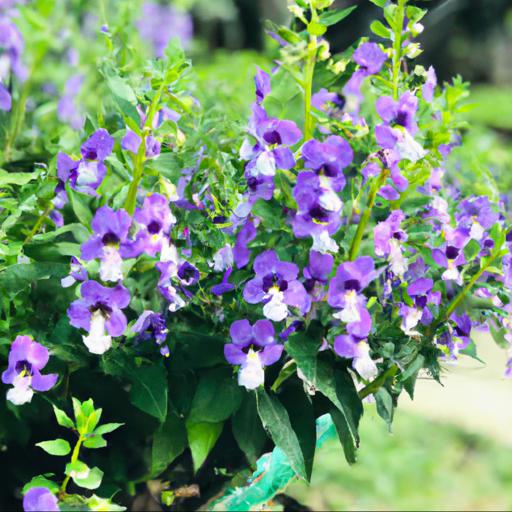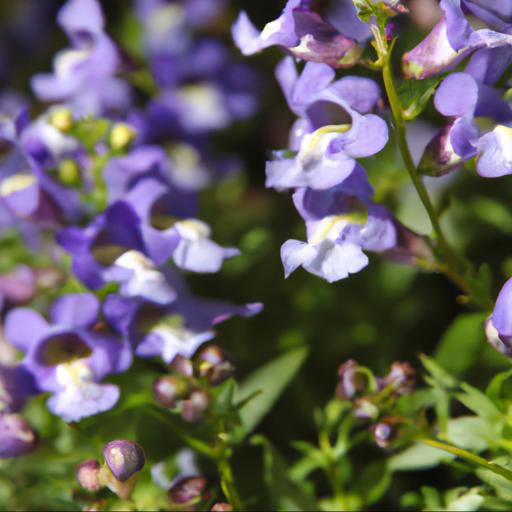The Scrophulariaceae family is one of the largest and most diverse plant families in the world. With over 2,000 species, it is found on every continent except Antarctica. These plants are known for their showy flowers, which come in a variety of shapes, sizes, and colors.
They are often used in landscaping and can be found in gardens, parks, and even natural areas. In addition to their beauty, Scrophulariaceae plants are also valued for their medicinal properties.
They are used to treat a variety of ailments, from respiratory conditions to skin disorders. This blog post will explore the many benefits of this fascinating family of plants.
Characteristics of scrophulariaceae

The Plant family Scrophulariaceae, commonly referred to as the figwort family, is composed of five subfamilies, which includes some of the most popular plants and flowers in the world. Within this group of diverse plants and flowers you’ll find the popular foxglove, African violet, snapdragon and water snapdragon.
But there are much more to the members of the Scrophulariaceae family than just beautiful flowers and plants. This plant family is also interesting for its range of characteristics and adaptations. The plants in this family are mostly herbs, and take root in a variety of soils, including sand, clay and loam.
They range in height from very short to tall, but most of the plants in this family reach heights of a few feet. Many also feature heavily branching stems, making them a good choice for hedges and diverse landscaping needs.
The leaves are mostly simple and mostly have both opposite and alternate arrangements. They are typically toothed and vary from dull to glossy in texture. The shape of the leaves vary among different species, so can be easily matched for a specific plant or flower family.
Scrophulariaceae are most recognizable for blooming beautiful flowers in white, pink, yellow, purple and light blue colors. Depending on the species, the blooms may be small, or up to 2 in in width. Some also feature lovely, aromatic scents.
The kernel-like fruits are also worth mentioning, as they usually contain a single seed. Other beneficial characteristics that come with choosing to landscape with plants and flowers from this group includes the repelling of aphids and other pests, their tolerance of various conditions, their preference for fertile soils, and their generally low-maintenance needs.
So if you’re looking for a way to beautifully and effectively landscape, the plant family Scrophulariaceae may be just what you need! With their pleasing colors, lovely scents and efficient pest-repelling qualities, they are a great investment and promise to bring some delight to your outdoor space.
Common species of scrophulariaceae

As a UK garden expert, I would like to discuss the various species of plants from the Scrophulariaceae family. Commonly referred to as figworts, these flowering plants form one of the largest families of vascular plants, with over 2000 species across the world.
In the UK, the species of figwort you are most likely to come across is Digitalis purpurea, also known as foxglove. Foxglove is a striking biennial characterized by its large magenta-purple flowers and sparse foliage. Its common name comes from the way its flowers resemble the fingers of a glove, and folklore suggests they were even used by fairies to adorn their footwear.
This is one of the most distinctive foxgloves, however it is just one of hundreds of species across the globe, all originating from the same plant family. Within the Scrophulariaceae family, some of the most common species of plants include Antirrhinum majus (Snapdragon), Digitalis purpurea (Foxglove), Melampyrum pratense (Yellow Oat-grass), Verbascum phoeniceum (Purple Mullein) and Scrophularia nodosa (Common Figwort).
These plants can be identified by their distinctive clusters of bright flowers and long stems, although they can also vary widely in size and shape. In terms of garden designs, these species of figworts are commonly used to add vibrant colour to flower beds or borders, and can even be arranged as tall hedges or feature plants. So if you are a passionate gardener and want to create a beautiful garden, look no further than the Scrophulariaceae family.
With its long stems and bright flowers, this family of plants provides you with an array of options to add beauty and colour to your garden.
Uses of scrophulariaceae

Scrophulariaceae – The Plant Family That Packs A Punch. Consisting of two subfamilies and more than 200 genera and over 2000 species, the Scrophulariaceae family is one of the most diverse and commonly seen families in the UK. Easily recognisable by its square-stemmed growth habit and numerous tubular flowers, plants in the Scrophulariaceae family can add a novel and attractive look to any garden landscape.
From its tall Delphiniums for central interest in borders to the evergreen Cynoglossum for early summer appeal, the Scrophulariaceae family offers unrivalled choice when it comes to garden plants. Adding texture, structure and size variety to gardens, elements from the Scrophulariaceae can help create a stunning visual display.
Take for instance, the colourful Snapdragon (commonly referred to as ‘Antirrhinum’). This strikingly vibrant flower will thrive in almost all soil types, and with its range of body heights and flower colours, the snapdragon makes a visually attractive addition to most gardens.
The easy to grow foxglove (digitalis), Dianthus and Penstemon are some of the other widely used members of the Scrophulariaceae family in the UK. Their low maintenance and adaptive nature means they will easily fit into any garden theme and provide a stunning seasonal display. Whether you’re looking to add a selection of outstanding structural evergreen plants, bright and eye catching flowers, or just some low maintenance foliage to your garden beds, the Scrophulariaceae family will provide you with ample choice.
Thanks to its sheer variety, there will no doubt be something to suit any UK garden from this interesting and visually appealing family of plants.
Our video recommendation
Final Touch
The Scrophulariaceae family is a large family of flowering plants, commonly known as figworts. It includes approximately 200 genera and over 2,800 species, which are found in temperate and subtropical regions around the world. The plants of this family are typically herbs or shrubs, and many are known for their attractive flowers.
They are used in gardens and as medicinal plants, and some species are also used for food. The Scrophulariaceae family is an important part of the global environment, providing food and medicine for humans and habitat for wildlife.
FAQ
What are the common characteristics of plants in the Scrophulariaceae family?
The common characteristics of plants in the Scrophulariaceae family include having simple, opposite leaves, two-lipped flowers, and a five-lobed calyx. They also typically have a corolla with four petals, a superior ovary, and a two-celled fruit.
What are some of the most popular plants in the Scrophulariaceae family?
Some of the most popular plants in the Scrophulariaceae family include snapdragons, foxgloves, mulleins, and figworts.
What are the different genera of plants in the Scrophulariaceae family?
The Scrophulariaceae family includes genera such as Antirrhinum, Digitalis, Verbascum, Mimulus, and Linaria.
What are the different species of plants in the Scrophulariaceae family?
The Scrophulariaceae family includes a wide variety of plants, including foxgloves, snapdragons, figworts, mulleins, and toadflaxes.
What are the uses of plants in the Scrophulariaceae family?
The Scrophulariaceae family includes a variety of plants that have a range of uses, including medicinal, ornamental, and food. Medicinally, many species are used to treat a variety of ailments, including respiratory and skin conditions. Ornamentally, some species are used as garden plants, while others are grown for their attractive flowers. Food-wise, some species are used as vegetables, while others are used as spices.
What are the medicinal properties of plants in the Scrophulariaceae family?
The Scrophulariaceae family of plants is known to have medicinal properties, such as anti-inflammatory, antispasmodic, diuretic, and expectorant effects. They are also known to be beneficial for treating respiratory ailments, skin conditions, and digestive problems.

